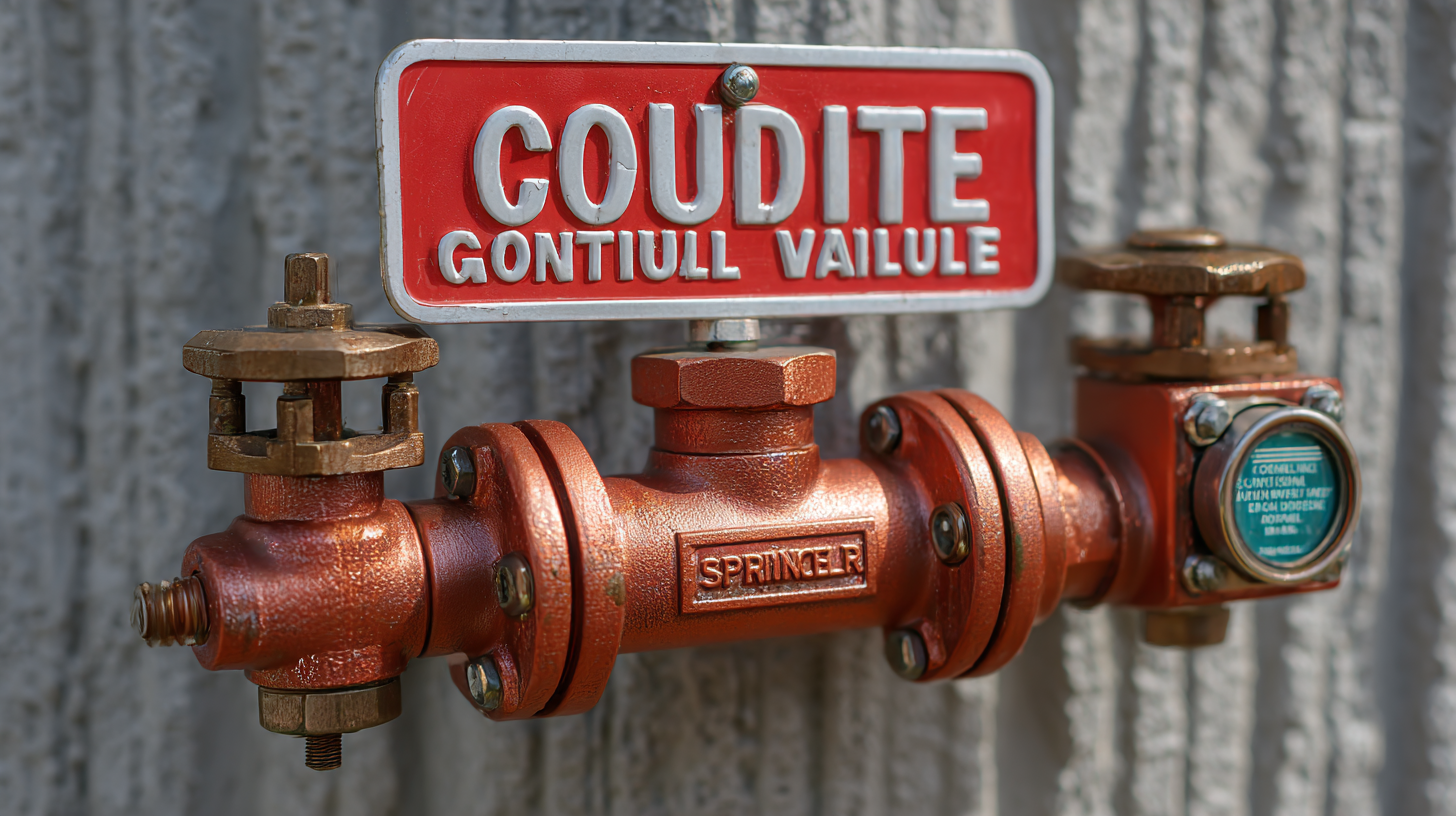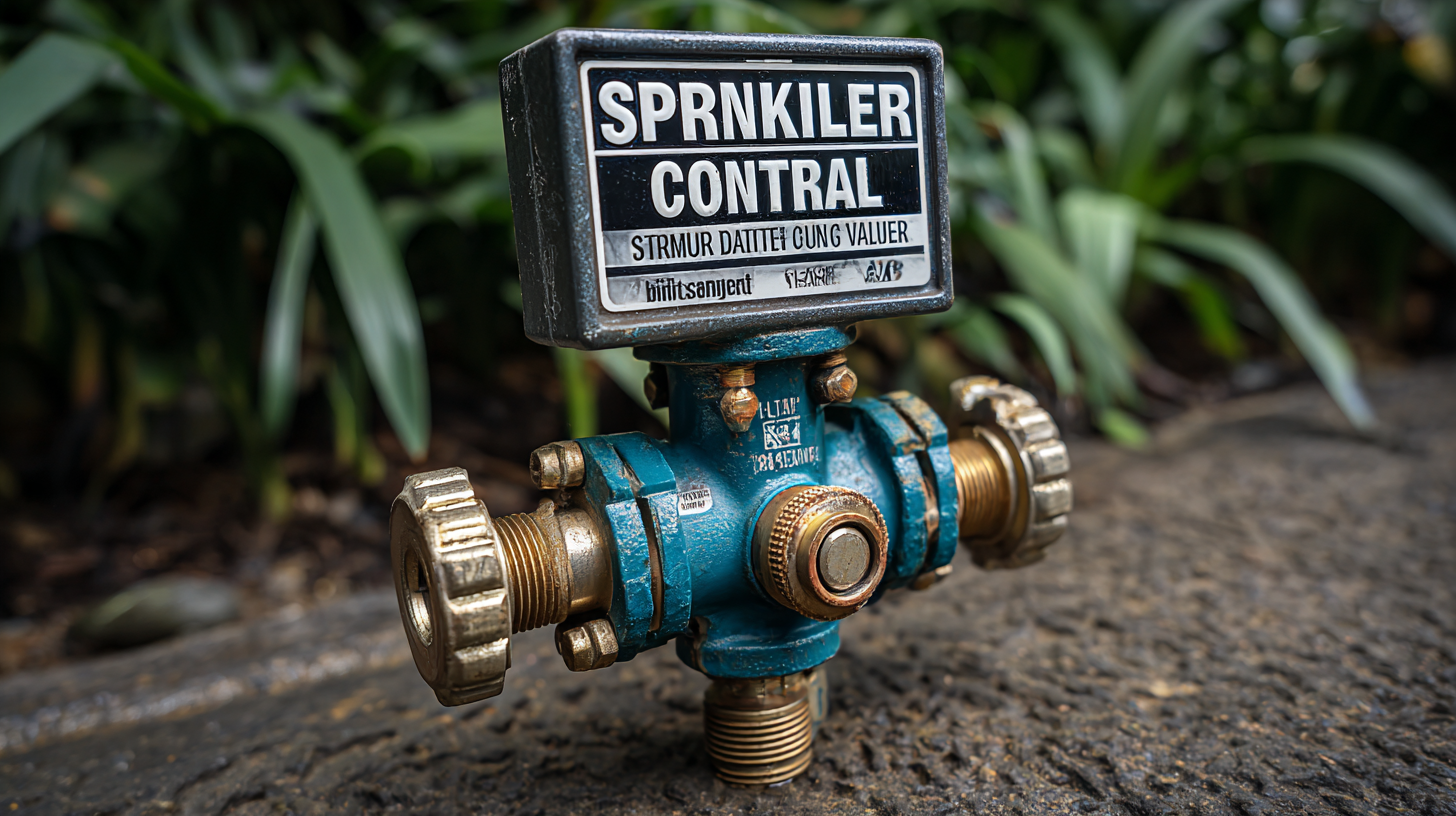Ultimate Guide to Selecting the Best Sprinkler Control Valve Sign for Your Irrigation System
In any irrigation system, the efficiency of water management significantly hinges on the selection of high-quality components, among which the Sprinkler Control Valve Sign plays a crucial role. A recent industry report from the Irrigation Association highlights that effective irrigation can improve water conservation by up to 50%, while properly labeled control valves ensure that users can operate their systems with precision. Furthermore, the global market for irrigation and drainage machinery is projected to reach $13 billion by 2025, emphasizing the growing recognition of advanced irrigation solutions. By investing time in selecting the best Sprinkler Control Valve Sign, landscapers and agricultural professionals can not only enhance their operational effectiveness but also contribute to sustainable practices in water usage. This guide aims to provide essential insights into how to identify reliable suppliers who can meet these critical needs for optimum irrigation performance.

Understanding the Importance of Sprinkler Control Valves in Irrigation Systems
 Sprinkler control valves play a crucial role in the efficiency and effectiveness of irrigation systems. These valves are responsible for regulating the flow of water, ensuring that each zone receives the appropriate amount of moisture required for optimal plant growth. Understanding their importance is essential for homeowners and landscapers alike, as the right control valve can significantly enhance the performance of both automated and manual irrigation systems.
Sprinkler control valves play a crucial role in the efficiency and effectiveness of irrigation systems. These valves are responsible for regulating the flow of water, ensuring that each zone receives the appropriate amount of moisture required for optimal plant growth. Understanding their importance is essential for homeowners and landscapers alike, as the right control valve can significantly enhance the performance of both automated and manual irrigation systems.
With the growing awareness of sustainable gardening practices, more homeowners are turning to advanced irrigation solutions, such as drip and sprinkler systems. Recent developments in the fire sprinkler market, projected to reach USD 22.73 billion by 2033, highlight a broader appreciation for effective water management systems. Selecting a high-quality sprinkler control valve not only maximizes irrigation efficiency but also contributes to water conservation efforts, making these systems both environmentally friendly and economically viable in the long term. Investing time in choosing the right valve can lead to healthier lawns and gardens, while minimizing resources wasted on inadequate irrigation practices.
Key Factors to Consider When Selecting Sprinkler Control Valves
When selecting sprinkler control valves for your irrigation system, several key factors need to be considered to ensure optimal performance and efficiency. First, understanding the flow rate and pressure requirements is crucial. According to the Irrigation Association, a proper match between the valve's specifications and the irrigation system's needs can enhance water distribution efficiency by up to 30%. This ensures that your landscape receives adequate water, minimizing waste and promoting healthy plant growth.
Another important aspect is material selection. Valves made from high-quality materials, such as PVC or brass, are more durable and resistant to the corrosive effects of water and soil. A report from the American Society of Agricultural and Biological Engineers indicates that systems incorporating high-grade materials can last up to 20% longer than inferior options. Lastly, consider the valve's compatibility with smart technology, as the trend towards automation in irrigation systems is on the rise. Data from the Smart Irrigation System Report highlights that incorporating smart technology can reduce water usage by about 30%, leading to significant savings on water bills and improved resource management.
Key Factors to Consider When Selecting Sprinkler Control Valves
This chart illustrates the key factors to consider when selecting sprinkler control valves for your irrigation system, with their corresponding importance ratings on a scale from 1 to 10. Durability is rated as the most critical factor, followed closely by flow rate and pressure rating.
Comparative Analysis of Different Sprinkler Control Valve Types and Their Efficiency
 When it comes to optimizing your irrigation system, selecting the right sprinkler control valve is crucial for enhancing efficiency and conserving water. A comparative analysis reveals that there are several types of control valves available, including electric, hydraulic, and manual models. According to a report by the Irrigation Association, electric valves can save up to 30% more water than manual alternatives, making them a preferable choice for larger systems. Furthermore, the hydraulic valves are noted for their low pressure loss and can maintain a consistent flow rate, essential for complex irrigation layouts.
When it comes to optimizing your irrigation system, selecting the right sprinkler control valve is crucial for enhancing efficiency and conserving water. A comparative analysis reveals that there are several types of control valves available, including electric, hydraulic, and manual models. According to a report by the Irrigation Association, electric valves can save up to 30% more water than manual alternatives, making them a preferable choice for larger systems. Furthermore, the hydraulic valves are noted for their low pressure loss and can maintain a consistent flow rate, essential for complex irrigation layouts.
One key tip for ensuring maximum efficiency is to choose valves that are compatible with your existing system pressures and requirements. Using the wrong type of valve can lead to inadequate water delivery, which compromises plant health. Additionally, consider opting for valves with built-in flow control features, as they allow for real-time adjustments, catering to varying weather conditions and plant needs.
When analyzing efficiency, don’t overlook the importance of regular maintenance. An estimated 70% of irrigation system issues stem from valve malfunctions due to debris build-up. It’s advisable to schedule periodic checks and cleanings to ensure your system operates at peak performance. Implementing these strategies will not only enhance the functionality of your irrigation system but also contribute to sustainable water usage in your landscape.
Industry Insights: Cost-Effectiveness of Upgrading to Smart Sprinkler Control Valves
Upgrading to smart sprinkler control valves can significantly enhance the efficiency of irrigation systems, particularly in the context of rising water costs and increasing environmental concerns. According to industry analysis, the smart home market, which includes such advanced irrigation technologies, is forecasted to witness substantial growth, driven by increasing consumer awareness and the need for sustainable solutions. The market's expansion reflects a shift toward automated and intelligent home systems, facilitating not just convenience but also cost savings in the long run.
Additionally, the backflow preventers market, expected to exceed USD 614.6 million by 2035, growing at a CAGR of 3.8%, underscores the critical need for plumbing safety and clean water. As consumers prioritize reliable and efficient water management solutions, the integration of smart sprinkler control valves can serve as a key component of an overall water safety strategy. By preventing backflow and ensuring proper irrigation management, homeowners can achieve greater efficiency and safety in their water use, aligning with broader trends in the industry toward smart and sustainable home technologies.
Ultimate Guide to Selecting the Best Sprinkler Control Valve Sign for Your Irrigation System - Industry Insights: Cost-Effectiveness of Upgrading to Smart Sprinkler Control Valves
| Feature | Traditional Valve | Smart Valve | Estimated Cost (USD) |
|---|---|---|---|
| Automation | Manual control | Remote access, scheduling | 150 - 300 |
| Water Conservation | Standard use | Sensors to optimize usage | 200 - 500 |
| Maintenance | Frequent manual checks | Automatic alerts | 300 - 600 |
| Installation | Simple | Complex, requires expertise | 400 - 800 |
| Return on Investment | Low | High due to savings | N/A |
Maintenance Tips to Extend the Life of Your Sprinkler Control Valves
Maintaining your sprinkler control valves is essential to ensure the longevity and efficiency of your irrigation system. Regular inspection is crucial; check for any signs of wear and tear, leaks, or blockages that might impede water flow. A simple visual examination can help identify issues before they escalate. Additionally, cleaning the valve components regularly can prevent dirt and debris from building up, which can lead to malfunctioning valves and inefficient irrigation.
Another vital maintenance tip is to ensure that the valves are operated seasonally, especially if you live in areas with extreme weather. During winter, it’s important to drain the system to prevent freezing and cracking. Conversely, during the growing season, regularly test the valves to confirm they open and close properly. Proper lubrication of mechanical parts may also help in ensuring smooth operation. By following these maintenance tips, you can significantly extend the life of your sprinkler control valves and maintain an efficient irrigation system, promoting the health and vitality of your landscape.
